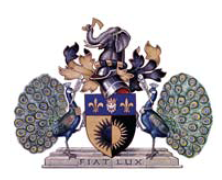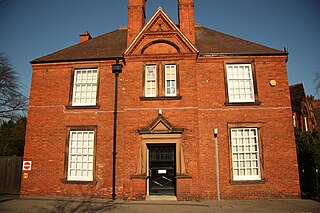
Moorfields Eye Hospital is a specialist National Health Service (NHS) eye hospital in Finsbury in the London Borough of Islington in London, England run by Moorfields Eye Hospital NHS Foundation Trust. Together with the UCL Institute of Ophthalmology, which is adjacent to the hospital, it is the oldest and largest centre for ophthalmic treatment, teaching and research in Europe.

The Mater Misericordiae University Hospital, commonly known as the Mater ( "matter"), is a major teaching hospital, based at Eccles Street, Phibsborough, on the northside of Dublin, Ireland. It is managed by Ireland East Hospital Group.

The Royal National Orthopaedic Hospital (RNOH) is a specialist orthopaedic hospital located in Stanmore in the London Borough of Harrow, run by the Royal National Orthopaedic Hospital NHS Trust. It provides the most comprehensive range of neuro-musculoskeletal health care in the UK, including acute spinal injury, complex bone tumour treatment, orthopaedic medicine and specialist rehabilitation for chronic back pain. The RNOH is a major teaching centre and around 20% of orthopaedic surgeons in the UK receive training there.
The Seafarers Hospital Society, formerly the Seamen's Hospital Society, is a charity for people currently or previously employed by the British Merchant Navy and fishing fleets, and their families. It was established in 1821.

City Hospital is a major hospital located in Birmingham, England, operated by the Sandwell and West Birmingham Hospitals NHS Trust. It provides an extensive range of general and specialist hospital services. It is located in the Winson Green area of the west of the city.

The London Fever Hospital was a voluntary hospital financed from public donations in Liverpool Road in Islington, London. It was one of the first fever hospitals in the country.

The Royal Orthopaedic Hospital (ROH) is a National Health Service specialist orthopaedic hospital situated in Northfield, Birmingham, England. The ROH specialises in bone and joint problems.

Northampton General Hospital is a district general hospital in Northampton, Northamptonshire, England. It is managed by the Northampton General Hospital NHS Trust.

St Leonard's Hospital is a hospital in Hoxton, London.

Liverpool Women's Hospital is a major obstetrics, gynaecology and neonatology research hospital in Liverpool, England. It is one of several specialist hospitals located within the Liverpool City Region, alongside Alder Hey Children's Hospital, Liverpool Heart and Chest Hospital, the Walton Centre, Mersey Regional Burns and Plastic Surgery Unit and Clatterbridge Cancer Centre. It is managed by the Liverpool Women's NHS Foundation Trust. The hospital receives approximately 50,000 patients annually and is the largest hospital for its specialism in Europe.

Highgate Hospital was a name used to refer to the infirmary building which opened in 1869 on the St Pancras side of Dartmouth Park Hill in Highgate, London.

The Grove Hospital, originally the Grove Fever Hospital, was a hospital for infectious diseases opened in Tooting Grove, London.

The Royal Eye Hospital was established in 1857 by John Zachariah Laurence and Carsten Holthouse as the South London Ophthalmic Hospital.
Gertrude Mary Richards, was a British nurse and military nursing leader during the First World War. She was matron and principal matron in the Queen Alexandra's Imperial Military Nursing Service from 1904 until her retirement in 1919.
Bethnal Green Hospital was an acute care hospital, in Bethnal Green in the London Borough of Tower Hamlets, England. It opened in 1900, and it closed in 1990.

Central London Ophthalmic Hospital, London was a hospital in Gray's Inn Road, London.

Taunton and Somerset Hospital was a hospital in Taunton, Somerset.
Trowbridge Cottage Hospital, was founded in 1870, and opened in The Halve in Trowbridge in 1886. In 1895, the hospital had ten beds. It was later known as Trowbridge District Hospital, and was demolished in the 1960s. It has been replaced with Trowbridge Community Hospital.
The Royal East Sussex Hospital was a healthcare facility based firstly in White Rock Road and from 1923 in Cambridge Road, Hastings, East Sussex.

The Bromhead Institution for Nurses and the Bromhead Nursing Home, was a healthcare facility in Lincoln.
















